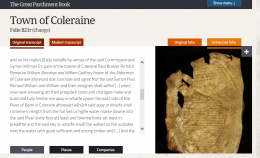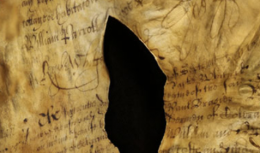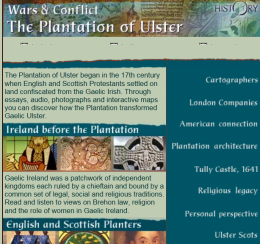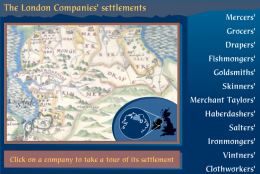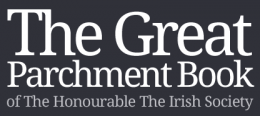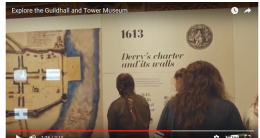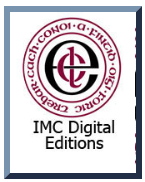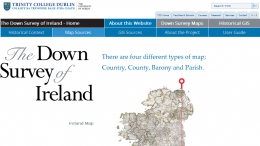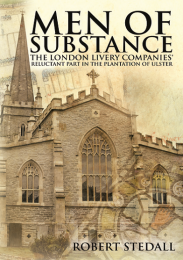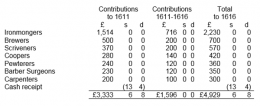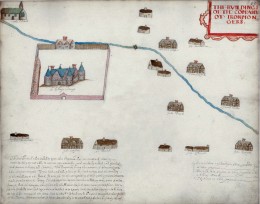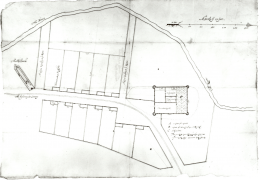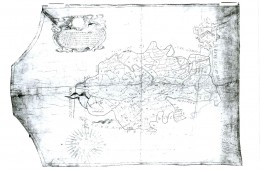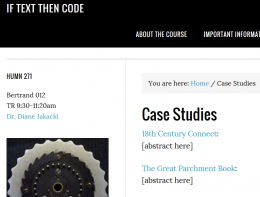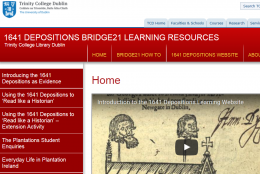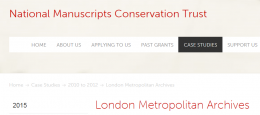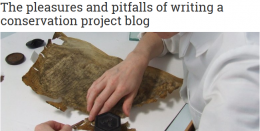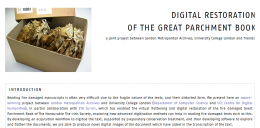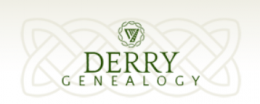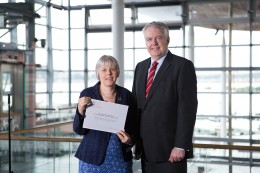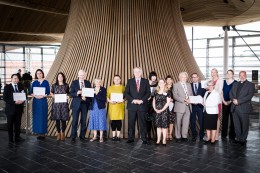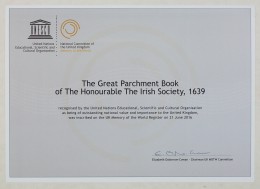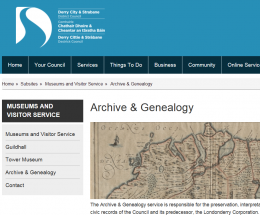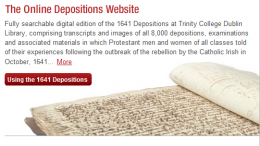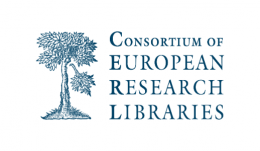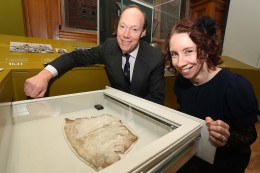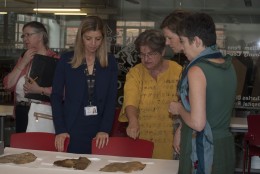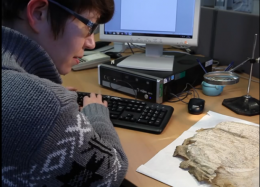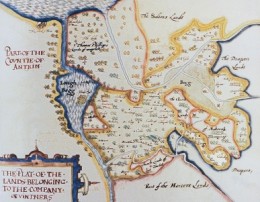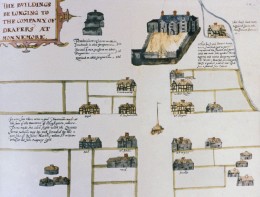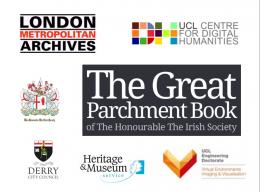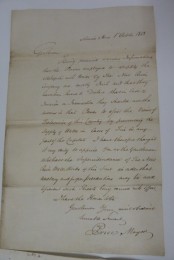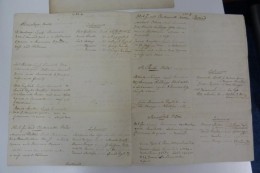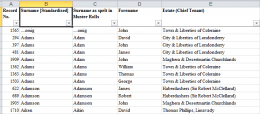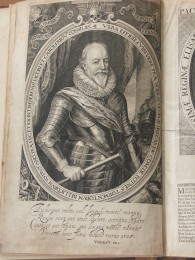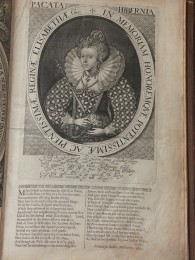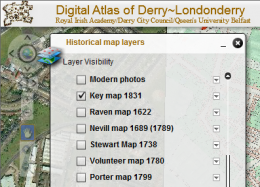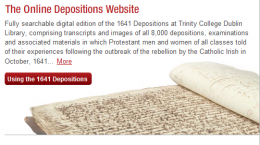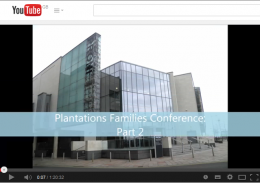It would appear that the younger, ambitious sons of English landed gentry and Scottish lairds, who were not going to inherit the family manor, took prominent roles in the various military campaigns and plantations of Ireland, and of North America, in the 17th century. Brian Mitchell looks at one such story concerning the Hillhouse family of Freehall, Limavady, County Londonderry in the Haberdashers’ proportion.
Starting Point
Family tradition in the United States records that Samuel Hillhouse, born c.1707, was from Limavady, County Londonderry and came to America as a young man. His parents were John and Rachel and they had a house/estate called Free Hall or Freehall, and his grandfather Abraham came from Failford, Ayrshire, Scotland.
Identifying the location of Freehall
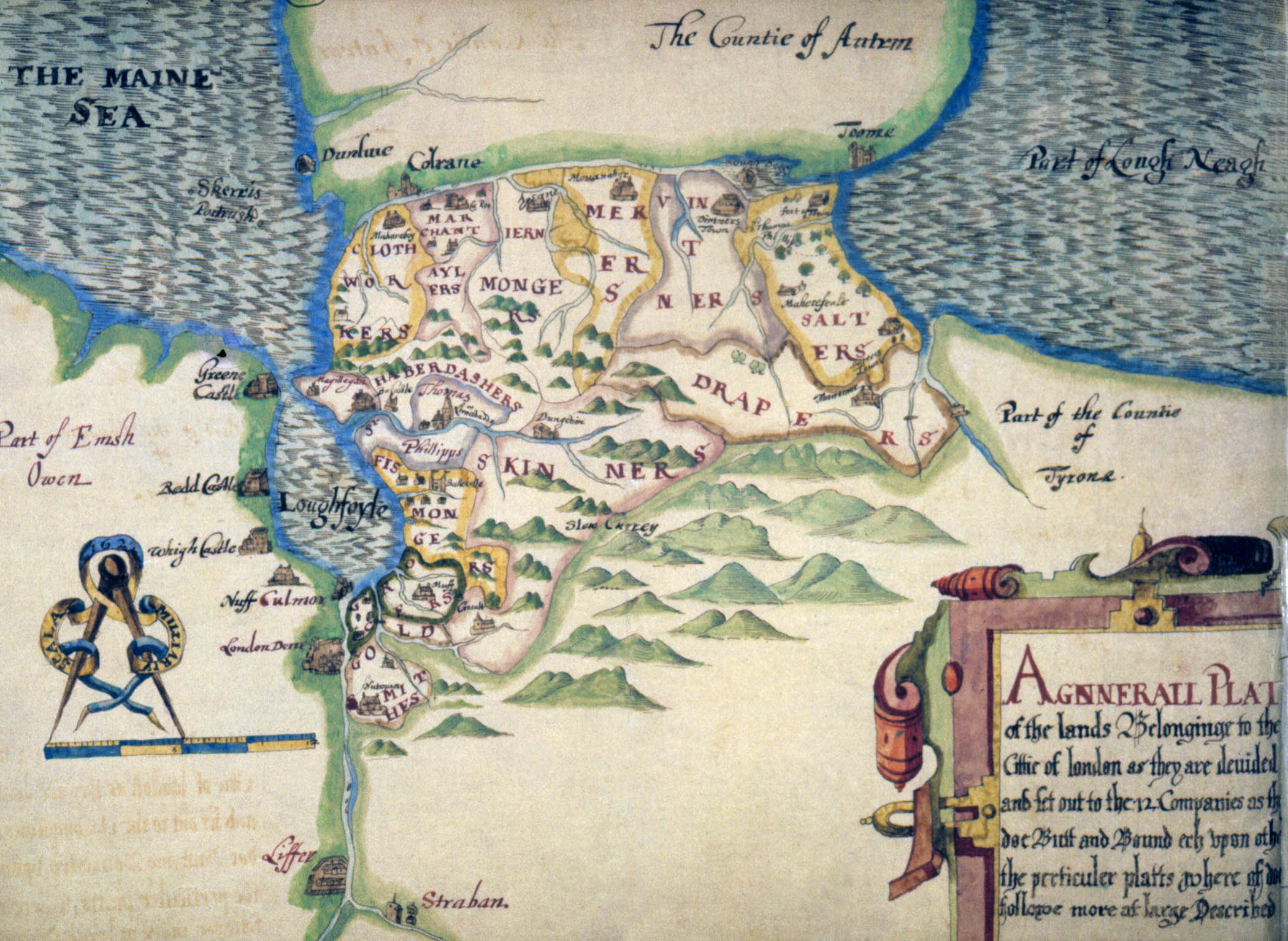
Thomas Raven’s map of the county of Londonderry, 1622 (copyright Trustees of Lambeth Palace Library)
During the 17th century Plantation of Ulster, the townland of ‘Free Hall or Moneyvennon’ in the civil parish of Aghanloo, located three miles northeast of the town of Limavady, County Londonderry, was granted to the Haberdashers’ Company of the city of London. Most of the Haberdashers’ proportion was located in Aghanloo parish. The castle and bawn of the Habersdashers stood on the River Roe at a place known as Ballycastle which was probably the site of a Norman castle. The Haberdashers built a linear village at Artikelly, one mile from their castle, consisting of one street with two rows of thatched single-storey cottages set in rectangular plots. Freehall was located one mile to the east of the castle at Ballycastle and one mile to the northeast of the village of Artikelly.
Church registers
Church registers of baptisms, marriages, and burials, with their ability to build and confirm family links, are the building blocks of family history. However, to the family historian seeking 17th and 18th century ancestors in Ulster, with a few notable exceptions, church registers are frequently irrelevant, owing to their nonexistence, Unfortunately, there are no surviving 17th or 18th century church registers for Aghanloo Parish.
It is always worth checking the registers of the Church of Ireland (Protestant) Cathedral as it was in effect the parish church of the Diocese, and in the case of the Diocese of Derry that is St. Columb’s Cathedral in the city of Londonderry, 16 miles west of Limavady, the registers of which date back to 1642. An examination of its registers of baptisms, marriages and burials (which have been transcribed, indexed and published in three books from 1642 to 1775) reveal seven Hillhouse burial entries (including potential spelling variations of the surname):
Died: 17 November 1700, Mary, daughter of James and Lettis Hillis
Died: 28 August 1702, Henry, son of William and Lettis Hillis
Died: 6 November 1705, Jane, daughter of William and Lettis Hilhous
Died: 4 September 1714, Ann wife of William Hillows
Died: 12 June 1730, Ann, wife of Abraham Hillhouse
Died: 2 June 1730, Forgison, son of Abraham and Ann Hillhouse
Died: 27 May 1732, John Hillhouse
Beyond church registers
A wide range of sources are available, however, and an examination of them confirms that the Hillhouse family were a significant family in the Limavady area throughout the 17th and 18th centuries. Indeed, an examination of these sources reveals that two Hillhouse families were settled in County Londonderry from the early years of the Plantation prior to the1641 Rebellion, one in Freehall, Limavady and the other in Dunboe parish, Coleraine.
Wills
Although there is no guarantee that an ancestor made a will or, indeed, that a will has survived, as the bulk of Ireland’s pre-1922 testamentary records (wills, administrations, probates, etc.) were lost in the destruction of the Public Record Office of Ireland during the Civil War in 1922, I would always recommend a search of any indexes that exist.
An examination of the Indexes to Irish Wills: Volume V, Derry and Raphoe, 1612-1858 (edited by Gertrude Thrift, Phillimore & Co, London, 1920) identified the following 17th century Hillhouse entries in County Londonderry: Abraham Hillhous, Ardikelly, parish Aghanloo, proved 1676; Adam Hillhous, Dunboe proved 1635.
Hence, it would appear that Abraham Hillhouse died c. 1676 at Ardikelly (spelt as Artikelly today) in the parish of Aghanloo and that an Adam Hillhouse died c. 1635 in Dunboe parish (just to the west of the town of Coleraine). Of course, what this source can’t do is tell us the nature of the link, if any, between Abraham of Artikelly and Adam of Dunboe.
The Great Parchment Book
Abraham Hillhouse (gentleman) was settled in Limavady by 1639 as the Great Parchment Book for the Haberdashers’ Proportion reveals:
On 17 August 1639, the Commissioners concluded and agreed that Robert McLeland, Gavin Kelsoe, Hugh Boyle, Alexander [?], Abraham Hilhouse and John McLeland shall have and hold all those six townlands called Artikelly, [?], Gortamoney, Maheraskeagh, Tullaherrenmore and Tullaherrenbegg in Aghanloo and have one weekly market on Wednesday in the town of Artikelly and three yearly fairs in town of Artikelly.
The minute books of Borough of Limavady
By 1665 Abraham Hillhouse was a serving Burgess of Limavady Corporation and in that same year John Hillhouse and William Hillhouse were ‘admitted and sworn Freemen’ of Limavady.
Sir Thomas Phillips described as “a pushing soldier of fortune” first arrived in Ireland as a military commander in 1599 and in 1610 he was granted 13,100 acres of land at Limavady which included O’Cahan’s castle, on a cliff overhanging the River Roe. One mile from the castle he commenced the building of the “Newtown of Limavady” which was laid out in a cruciform road pattern. By 1622, 18 one-storey houses and an inn had been built centred on the crossroads which contained a flagpole, a cross and stocks.
Newtown-Limavady (known as Limavady from 1870) was incorporated as a town on 31 March 1613 with a charter granted by King James I. According to this Charter the town was to appoint a Provost and 12 Burgesses who were to form the common council or Corporation, and to return two Members of Parliament (which ceased with the Act of Union which created, in 1801, the United Kingdom of Great Britain and Ireland).
Corporation records, the minute books of the Common Council of Limavady Corporation, date from 1659. Each set of minutes begins with date of the meeting of the Common Council and list of members in attendance. Edited abstracts from these minute books have been transcribed and published in Records of the Town of Limavady, 1609 to 1808 by E. M. F-G Boyle (published 1912, republished as Boyle’s Records of Limavady, 1609 to 1808 by North-West Books, Limavady, 1989). The following Hillhouse references are recorded:
Corporation Meeting of 24 June 1665: In attendance, Abraham Hillhouse, Burgess of the Corporation of Newtown-Limavady; John Hillhouse and William Hillhouse were ‘admitted and sworn Freemen’.
Corporation Meeting of 24 June 1696: William Hillhouse sworn Freeman.
Corporation Meeting of 29 September 1708: William Hillhouse sworn Freeman.
Corporation Meeting of 14 October 1718: In attendance, William Hillhouse, Constable.
The Registry of Deeds
An examination of the records of the Registry of Deeds confirm that the Hillhouse family were still residing at Freehall, near Limavady in the middle years of the 18th century. In 1745 the estate of Freehall passed from Abraham Hillhouse to his son Abraham James Hillhouse, who was a merchant in London, and a marriage settlement, dated 1717, shows that Abraham Hillhouse of Freehall married Ann Ferguson, daughter of Reverend Andrew Ferguson of Burt, County Donegal.
1641 Rebellion
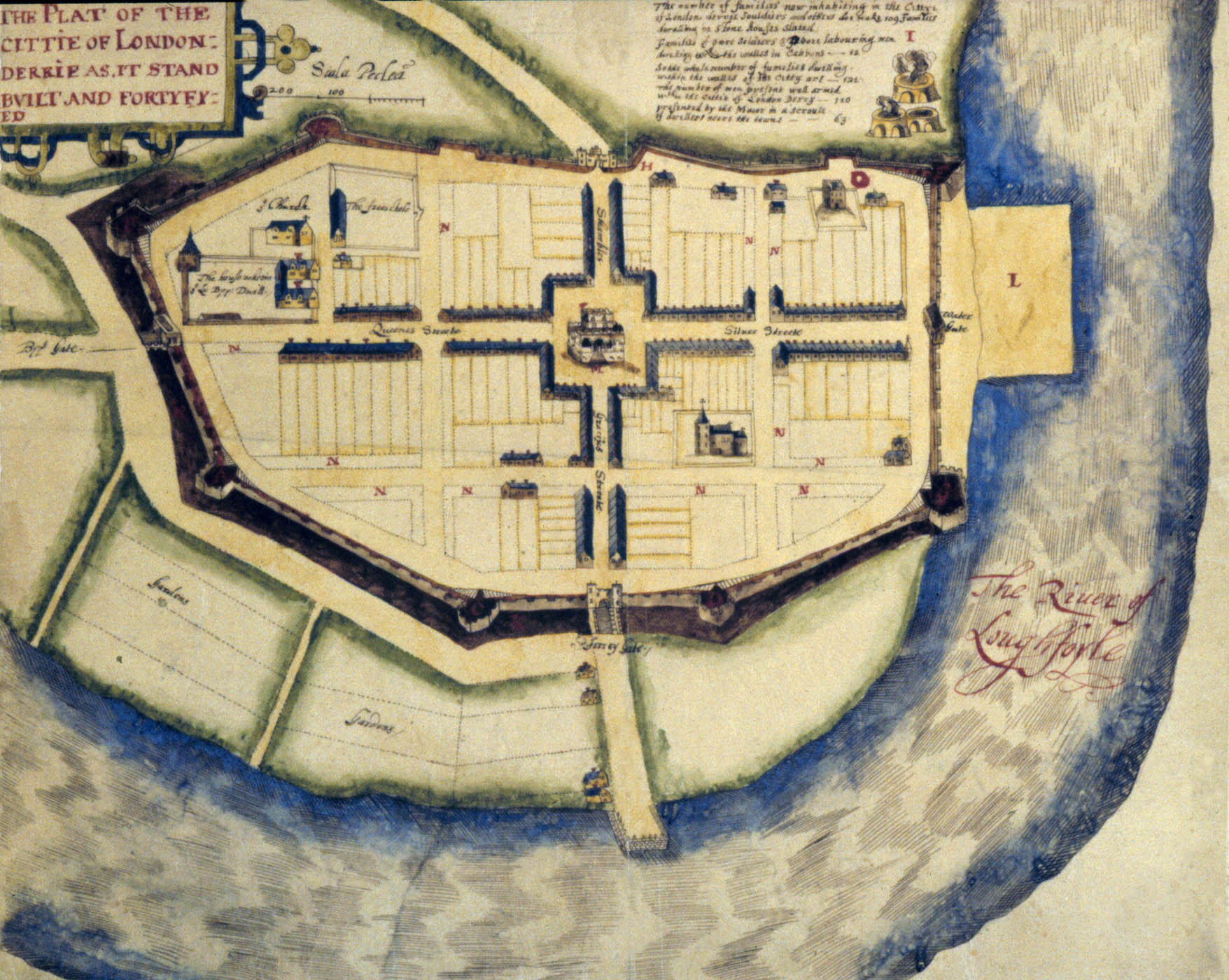
Thomas Raven’s plan of Londonderry ca. 1622 (copyright Trustees of Lambeth Palace Library)
In 1641 the Plantation of Ulster faced its first serious crisis. On 22 October 1641 the native Irish, under Sir Phelim O’Neill, rose in rebellion in the counties of Londonderry and Tyrone, and the walled city of Londonderry became a refuge for Protestant settlers. A “League of the Captains of Londonderry” was set up to guard the city, with the raising of nine companies of foot soldiers, each assigned with a particular section of the walls of Derry to repair and to defend. By April 1642 the city was close to starvation, with the rebel forces led by Sir Phelim O’Neill camped at Strabane. However, the threatened siege of Derry was lifted on 17 May 1642 by the defeat of the Irish army, led by the O’Cahans (O’Kanes), near Dungiven, County Derry by an army consisting of east Donegal settlers and four companies of soldiers from Derry city.
A fully searchable digital edition of the 1641 Depositions at Trinity College Dublin Library can be searched at http://1641.tcd.ie. The 1641 Depositions consist of transcripts and images of all 8,000 depositions, examinations and associated materials in which Protestant men and women of all classes told of their experiences following the outbreak of the rebellion by the Catholic Irish in October 1641.
A surname search of ‘Hilhouse’ records four depositions relating to the death of John Hilhouse of Gortycavan in Dunboe Parish, County Derry, three miles west of the town of Coleraine.
Seemingly, after defeating and killing a party of English and Scottish men garrisoned at Garvagh, County Londonderry about 20 December 1641, Rory Duffe McCormacke and his brothers Art and Edmund McCormacke and about 30 to 40 men armed with long pikes set upon the British at ‘Gortecavan in the parish of Dunboe’ and killed John Hilhouse.
It is possible, but not proven, that John Hilhouse of Gortycavan, Dunboe parish, who died during the 1641 Rebellion, was the son of Adam Hilhous of Dunboe whose will was proved in 1635.
Fighters of Derry
Nearly fifty years later the Plantation of Ulster faced another potential reversal to its fortunes in the events surrounding the 1689 Siege of Derry, and a Captain Abraham Hillhouse of Coleraine is recorded as a ‘defender’ of Derry.
William R. Young’s Fighters of Derry Their Deeds and Descendants: Being a Chronicle of Events in Ireland during the Revolutionary Period 1688-1691 (published by Eyre and Spottiswoode, London, 1932) is a unique and unrivalled source for tracing 17th century Plantation of Ulster ancestors. This book names and, in many cases, provides biographical detail of 1660 “Defenders” and 352 officers of the “Jacobite Army”.
‘Defenders’ refers to all those people who were named in contemporary sources and accounts as playing an active or supportive role in the successful Williamite campaign of 1689 to 1691, which included the Siege of Derry of 1689.
The Williamite War in Ireland, 1689-1691, was, in effect, the struggle for the English throne between the deposed James II, the last Catholic monarch of the three Kingdoms of England, Scotland and Ireland who had the support of Louis XIV of France, and William of Orange with the backing of the English Parliament.
Young’s book names the prominent supporters of Protestant interests throughout Ireland at this time, including those named on list of attainted in James’s Dublin parliament. James II’s Parliament, which met in Dublin on 7 May 1689 and sat for three weeks, passed ‘The Bill of Attainder’ which confiscated estates and condemned without trial over 2,500 persons, of whom 921 were from Ulster, of high treason. This book lists:
Defender 739: ‘Captain Abraham Hillhouse, of Coleraine, defender, so described, is among the attainted in James’ Dublin Parliament, and his signature is on the address to King William after the relief’ [after the lifting of the Siege of Derry of 1689].
Condemnation of assassination attempt on William III in 1696
In the Corporation of Londonderry minute book of 16 April 1696 (pp132-133, Volume 2, January 1688 to 20 July 1704) are tabulated in three columns, the names of 226 citizens of the city of Londonderry who signed a resolution expressing condemnation of the plot to assassinate King William. A James Hillhouse was recorded as one of these signatories.
William III ruled jointly, from 1689, with his wife, Mary II, until her death on 28 December 1694. There was a considerable surge in support for William, who reigned as King of England, Scotland and Ireland until his death on 8 March 1702, following the exposure of a Jacobite plan to assassinate him in 1696.
The Corporation of Londonderry minute books, which date from 1673, can be browsed online at https://www.nidirect.gov.uk/information-and-services/search-archives-online/londonderry-corporation-records.
Local history publications
Local history publications can provide a wealth of material on the history of families and of place. Charles Knowles Bolton in Scotch Irish Pioneers in Ulster and America (first published in 1910), on page 113, writes:
“The Rev. James Hillhouse was born about 1688, the son of John and Rachel Hillhouse, owners of a large estate called Freehall, in County Londonderry. He studied at Glasgow under the famous Professor Simson and was ordained by Derry presbytery October 15, 1718. Coming to America in 1720, he was called to a church in the second parish of New London in 1722, where he died December 15, 1740. His son William was a member of the Continental Congress, and William’s son James was a Senator of the United States.”
With all this information the following family tree linking the Hillhouse family in Scotland, Ireland and America can be constructed:

In conclusion
It is well known that many people from Scotland migrated to Ulster throughout the 17th century and that many of their descendants settled for a few years or a few generations in Ireland before emigrating to North America in the 18th century.
It is claimed that 56% of Americans with Irish roots are of Protestant stock, whose roots in many cases can be traced back to the Scots-Irish (also known as Ulster-Scots) who settled on the frontier of colonial America in the 18th century – Pennsylvania, Virginia and the Carolinas. Potentially some 20 million Americans today have Scots-Irish origins.
Compiled by Brian Mitchell, Derry Genealogy, www.derry.rootsireland.ie




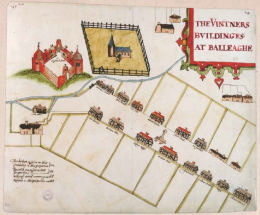 In 1618 Jones also secured funds to build a church, though his financial troubles meant the building of the church was not completed for several years. Regardless, Jones received a knighthood in 1621 for his work on the plantation. By 1622 many of the buildings in Bellaghy were complete. Thomas Raven’s map of the town shows fifteen timber-framed houses with brick gables, the Bawn at the top of the main street, a market cross and a church.
In 1618 Jones also secured funds to build a church, though his financial troubles meant the building of the church was not completed for several years. Regardless, Jones received a knighthood in 1621 for his work on the plantation. By 1622 many of the buildings in Bellaghy were complete. Thomas Raven’s map of the town shows fifteen timber-framed houses with brick gables, the Bawn at the top of the main street, a market cross and a church. Did you know that the Public Record Office of Northern Ireland has published many information leaflets online in its family tree and local history series, several of which might be useful for those researching Irish history and delving into sources such as the Great Parchment Book? The leaflets outline what records are available, what information can be found in the records, and how and where the records can be accessed.
Did you know that the Public Record Office of Northern Ireland has published many information leaflets online in its family tree and local history series, several of which might be useful for those researching Irish history and delving into sources such as the Great Parchment Book? The leaflets outline what records are available, what information can be found in the records, and how and where the records can be accessed. Local history leaflet 1:
Local history leaflet 1:  In 2018 a new edition was published by PRONI and the Ulster Historical Foundation prepared by Ian Montgomery and William Roulston containing an additional ten documents making 30 in all. The documents are mainly sourced from collections in PRONI, but also include printed material and documents from the British Library, the Huntington Library California, Lambeth Palace Library, the National Library of Ireland, The National Archives, Trinity College Dublin and West Yorkshire Archives Service, a memorial inscription and a plaque.
In 2018 a new edition was published by PRONI and the Ulster Historical Foundation prepared by Ian Montgomery and William Roulston containing an additional ten documents making 30 in all. The documents are mainly sourced from collections in PRONI, but also include printed material and documents from the British Library, the Huntington Library California, Lambeth Palace Library, the National Library of Ireland, The National Archives, Trinity College Dublin and West Yorkshire Archives Service, a memorial inscription and a plaque.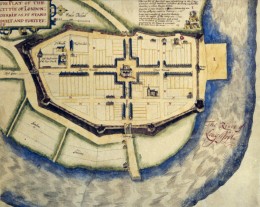
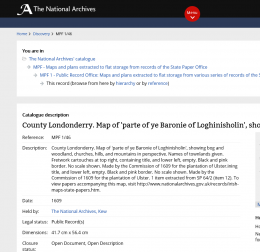 Discovery, TNA’s online catalogue, contains detailed descriptions of each map and a high resolution image is downloadable for a fee directly from the catalogue entry (
Discovery, TNA’s online catalogue, contains detailed descriptions of each map and a high resolution image is downloadable for a fee directly from the catalogue entry (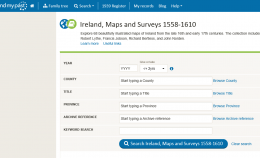 The maps have also been published online by Findmypast, a subscription based family history website, as
The maps have also been published online by Findmypast, a subscription based family history website, as